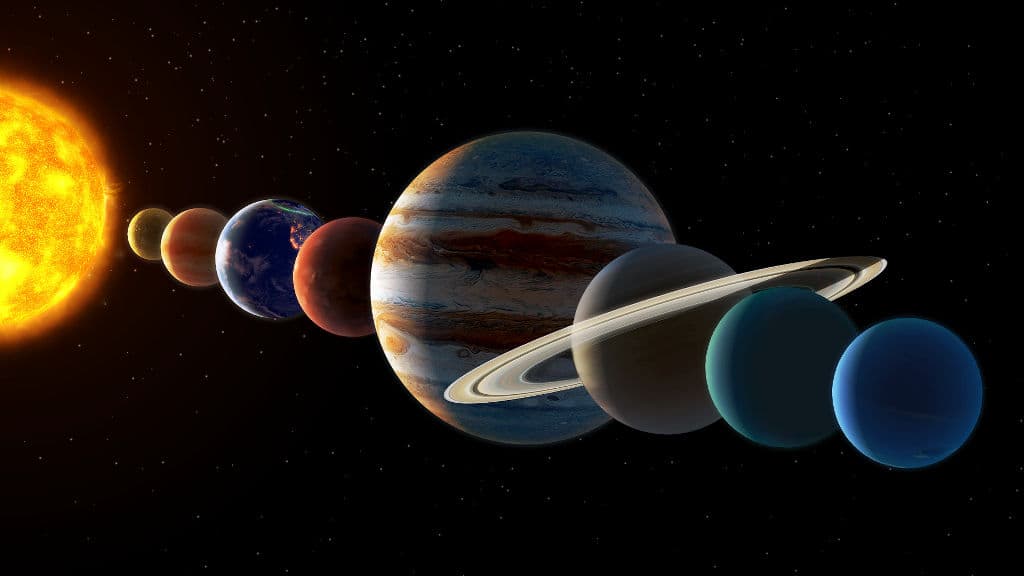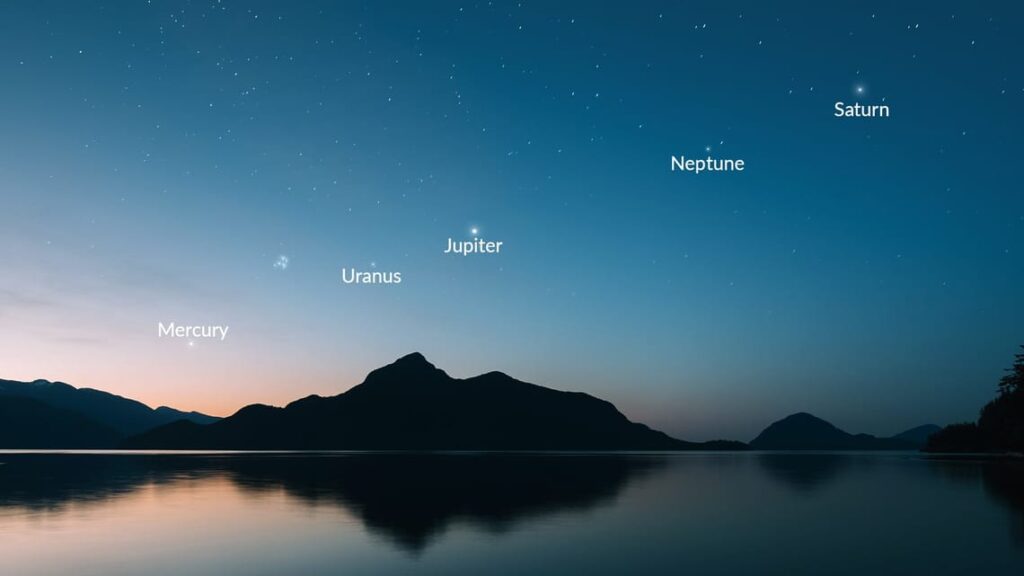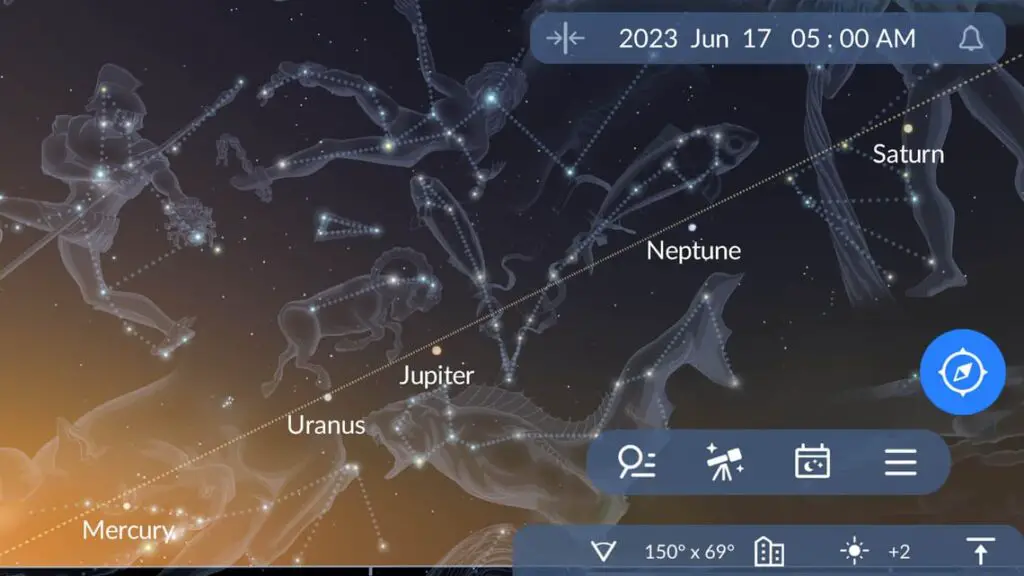What is a planet parade?
A rare planet parade is a colloquial term that means, in the broadest sense, that several planets are present in the sky in one night.

Table of Contents
It is also sometimes used to describe the event when several planets gather closely on one side of the Sun at the same time. This is also known as a planetary alignment.
How often do planet parades happen?
Planet parades are not very common events. They depend on the orbital periods and positions of the planets relative to the Sun and the Earth. The last time all five naked-eye planets (Mercury, Venus, Mars, Jupiter and Saturn) were visible in the sky together was in July 2020. The next time this will happen will be in 2041.
Uranus takes a pounding more frequently than thought
62 New Moons Discovered Orbiting Saturn, Overthrowing Jupiter’s Record
When is the next rare planet parade?
The next rare planet parade will occur on June 17, 2023, when five planets – Saturn, Neptune, Jupiter, Uranus and Mercury – will line up within a 93-degree sky sector2. This will be a rare opportunity to see five planets at once, but be aware that two of them (Neptune and Uranus) will be challenging to spot.

How to see the rare planet parade?
To see the rare planet parade on June 17, you will need to wake up early and find a place with a dark sky without light pollution and with a clear view of the horizon. You will also need a pair of binoculars or a telescope to see Neptune and Uranus.
The best time to observe the rare planet parade will be about an hour before sunrise. The planets will be visible in the eastern sky as follows:

- Saturn (magnitude 0.9) will be the first planet to rise as early as the middle of the night on June 16-17. Look for it in the constellation Aquarius.
- Neptune (magnitude 7.9) will be about 10° lower in the neighboring constellation Pisces. The planet won’t be seen with the naked eye – to spot it, you will need at least a pair of binoculars.
- Jupiter (magnitude -2.4) will be the brightest planet in the sky. It will rise around 3:30 a.m. local time and will be located in the constellation Aquarius, near Saturn.
- Uranus (magnitude 5.9) will be another dim planet that will require optical aid to see. It will rise around 4:00 a.m. local time and will be located in the constellation Aries, about 20° above the horizon.
- Mercury (magnitude -0.6) will be the last planet to rise and the closest to the horizon. It will rise around 5:00 a.m. local time and will be located in the constellation Taurus, near the bright star Aldebaran.
You can use a stargazing app like Sky Tonight to help you locate the planets in the sky with ease.
What else can you see in June?
The rare planet parade is not the only celestial event happening in June. Here are some other highlights:
- June 10: Annular solar eclipse. A ring of fire will appear around the Moon as it passes between the Earth and the Sun. The eclipse will be visible from parts of Canada, Greenland, Russia and northern Europe.
- June 18: New moon. The Moon will be invisible as it aligns with the Sun. This is a good time to observe faint objects like galaxies and nebulae.
- June 21: Summer solstice. The longest day and shortest night of the year in the northern hemisphere. The Sun will reach its highest point in the sky at noon.
- June 24: Full moon. The Moon will be fully illuminated by the Sun and will appear opposite to it in the sky. This full moon is also known as the Strawberry Moon because it marks the peak of strawberry harvesting season.
Why are rare planet parades important?
Rare Planet parades are important for several reasons:
- They are beautiful and rare sights that can inspire awe and wonder.
- They can help us appreciate the diversity and complexity of our solar system.
- They can provide opportunities for scientific observation and discovery.
- They can stimulate our curiosity and imagination.
What are some myths and legends about rare planet parades?
Planet parades have fascinated humans for millennia and have inspired many myths and legends across different cultures. Some examples are:
- In ancient Greece, the planets were associated with the gods and goddesses of the Olympian pantheon. For example, Mercury was Hermes, the messenger of the gods; Venus was Aphrodite, the goddess of love and beauty; Mars was Ares, the god of war; Jupiter was Zeus, the king of the gods; and Saturn was Cronus, the father of Zeus.
- In ancient China, the planets were linked to the five elements of nature: wood, fire, earth, metal and water. For example, Mercury was water, Venus was metal, Mars was fire, Jupiter was wood and Saturn was earth.
- In ancient India, the planets were considered to have astrological influences on human lives and destinies. For example, Mercury was associated with intelligence and communication; Venus with romance and wealth; Mars with courage and aggression; Jupiter with wisdom and spirituality; and Saturn with discipline and karma.
Bottom line
Planet parades are amazing events that showcase the beauty and diversity of our solar system. The next one will take place on June 17, 2023, when five planets will align in the eastern sky before sunrise. Don’t miss this rare opportunity to see five planets at once!

